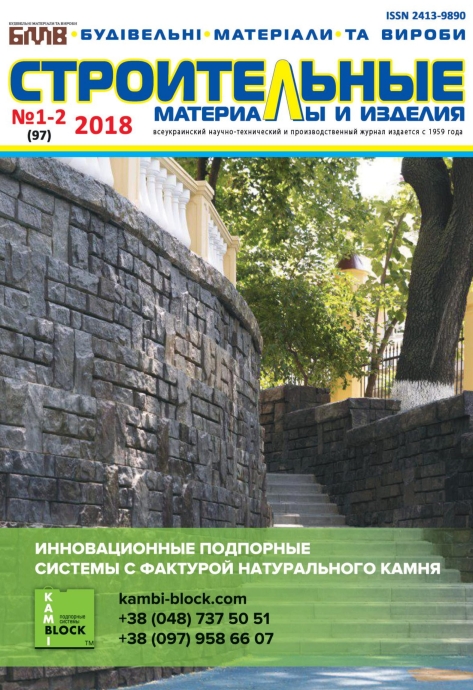THE ROLE OF HEAT OF CEMENT HYDRATION IN FORMING THE EXPLOITATION PROPERTIES OF CONCRETE
DOI:
https://doi.org/10.48076/2413-9890.2018-97-07Keywords:
crack formation, concrete composition, heat evolution of hydration, maximum temperature, compressive strength, thermal stressesAbstract
It is shown that one of the causes of crack formation in hardening concretes is the formation of tensile stresses caused by temperature increase resulting in heat release during cement hydration together with shrinkage deformations. The role of concrete technology and the production of concrete works in fracturing is established. The need to harmonize concrete compositions and the type of cement used with seasonal temperature fluctuations is shown to achieve the required early strength of concrete with a relatively low temperature rise. The characteristic dependence of the early strength of concrete on the value of the heat of hydration of cement in the early periods of hardening is given. The above dependence makes it possible to determine the time for decking without additional tests for ordinary concrete compositions in the conditions of Ukraine.Metrics
References
Neville A., Cement and concrete: their interaction in practice, in Advances in Cement and Concrete, Ameri- can Soc.Civil Engineers, New York, (1994), pp. 1 – 14.
Сопов В.П., Белых И.М., Глазнева А.П. Роль темпера- турного фактора в технологии мо-нолитного бетона.
/ Науковий вісник будівництва. Харьков: ПФ «Михай- лов», № 49. – 2008. -с. 208-212.
Несветаев Г.В. Бетоны: учебно-справочное пособие. 2-е изд., перераб. и доп. Ростов-на-Дону: Феникс, 2013. – 381 с.
Журов Н.Н., Комиссаров С.В. Система температурно- прочностного контроля бетона в раннем возрасте. / Вестник МГСУ, 2010. - №4. – с. 296-300.
Riding K. A., Evaluation of Temperature Prediction Meth- ods for Mass Concrete Members. / K. A. Riding, J. L. Poole, A. K. Schindler, M. C. G. Juenger, and K. J. Folliard. ACI Materials Journal, (2006). – 103(5). – рр. 357-365. Сопов В.П., Поклонский Е.В., Белых И.М. Расчет тем- пературных полей в бетоне. / Науковий вісник будів- ництва. Харьков: ПФ «Михайлов», № 54. – 2009. -с. 374-378.
Воробьева, T.M. Исследование температурных полей в кон струкции основания фундаментной железобе- тонной плиты здания / Т.М. Воробьева, А.В. Головко
// Научно-технические проблемы транспорта, про- мышленности и образования: материалы Все рос-Хабаровск, 21-23 апр. 2010 г.: в б т. / ДВГУПС; ред. О.Л. Рудых. - Хабаровск, 2010. -Т. 2 .-С . 226-230.
Thielen, G.; Grube, H.: Maßnahmen zur Vermeidung von Rissen im Beton. Betonund Stahlbetonbau 85 (1990) H. 6, S. 161–167.
Report on Thermal and Volume Change Effects on Cracking of Mass Concrete. Reported by ACI Committee 207, 2007. – 32p.
Моделирование влияния градиентов температур на распределение напряжений на стадии гидратации бетонов / Ю. А. Абзаев, А. И. Гныря, С. В. Коробков и др. // Вестник ТГАСУ. – Томск: ТГАСУ, 2016. – № 3 (56). – С.129 – 138.
Hintzen, W.; Grube, H.: Verminderung der Rißbildung in Tunnelinnenschalen aus Ortbeton. Betonbau in Forschung und Praxis, Verlag Bau + Technik 1999. – S.177–184.
Downloads
Published
How to Cite
Issue
Section
License
Copyright (c) 2018 Authors

This work is licensed under a Creative Commons Attribution 4.0 International License.




